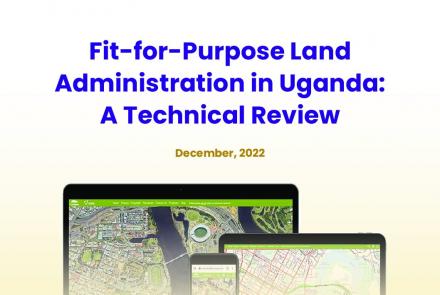Influencing the increase in documentation of land rights for women
The ability of dominant groups to use customary law to localize and privatize disputes, thereby undermining women’s capacity to participate in discussions about what is fair, reminds us that justice, as a set of principles for allocating the benefits and burdens of social cooperation, is ultimately about power.” (Khadigala, 2002: 119)
Providing poor people with access to land, security of tenure and improving their ability to make effective use of land has long been recognized as critical to poverty reduction and empowerment of the rural poor (Deininger, 2003). One multi-country assessment has shown that when land rights are more equitably accessed and distributed, a country is likely to have two to three times more growth than their counterparts without such a policy (World Bank, 2005, in IFAD, 2008). Thus, as in most Sub-Saharan African countries where agriculture is the engine of economic growth, it is not surprising that land has been placed at centre stage in Uganda’s development agenda (IFAD, 2008). Whether a tenure system is communal or individual, freehold or leasehold, Ugandan farmers holding secure land rights are more likely to invest in their land and achieve productivity gains (DFID, 2004) and are typically better positioned to deal with the shocks and stresses that can otherwise drive individuals and families deeper into poverty (Deininger, 2003).
In line with its national poverty reduction strategies, Uganda adopted the Land Act (GoU, 1998) with the intent of supporting formalization of custoary land rights while promoting freehold tenure and making provisions to secure land rights of underprivileged groups.
At the core of these issues is the debate as to whether titling is the best mode of tenure security. These arguments are well captured in the words of the Special Rapportuer to the Right to Food (de Schutter, 2011):
“The role of those who work on improving secure access to land is important, but also more difficult than ever. In the past, people thought that it was enough to promote land titling programmes to expand the number of people who could use the land and make it more productive. Now, however, it is recognized that titling programmes per se are not enough. The poorest people have often been priced out. Land titling programmes have been captured by elites, women are often sidelined, and those who rely on communal lands and commons have not been sufficiently taken into consideration. In addition, the simple codification of customary forms of tenure may be problematic, especially if they discriminate against women or those who are not part of a community.”
Although legislation provides a powerful platform on which institutions, structures and processes can be mandated to advance pro-poor, gender responsive objectives, such mechanisms do not ensure that transformations have or will be achieved in terms of gender relations and biases. Indeed, since adoption of legal reforms in Uganda, only marginal change has occurred at a grassroots level with respect to women’s empowerment and core power imbalances affecting the everyday lives of women and men (Eilor and Giovarelli, 2002; Hunt, 2004). Ugandan women supply 70-80% of agricultural labour yet only 30% of women control the proceeds from land (Ovonji-Odida et al, 2000). Formally, women own only 16% of land, while informal ownership is about 15% and conjugal ownership is estimated at 3% (Sebina-Zziwa, 2011) and gender disparities in ownership have been documented for all tenure types (Eilor and Giovarelli, 2002). Despite the widely-recognized role that women play in agricultural production and the livelihood and food security of rural households, female farmers generally remain with fewer and weaker rights to land than male farmers; they receive less agricultural extension training and credit; and are generally under-represented in farmers’ organizations (Coles and Mitchell, 2010).
Disparities in control, ownership and benefits from land rights are mainly premised on the cultural belief that women should access land through their fathers, brothers, husbands and sons, thus keeping a woman’s rights to land in the private domain and dependent on a good relationship with her male relatives; whereas men’s rights to land are in the public domain and defined by law and customs (ICRW, 2011; Rugadya, 2011). Thus, Ugandan women’s access to land is primarily conditioned by marital regimes (community property or separation of property within marriage) and inheritance regimes in the customary domains (Deere and Doss, 2006).
Strategic Objective 3: By 2022, LANDnet will have significantly influenced processes and practices that improve tenure security for women on customary land
Outcome:
- Increased security of tenure for women on customary land in all its tenets (individual, family and communal customary)
Key activities
- Influence the development of the customary land registration law to mainstream gender equality.
- Influence gender equality in the tools used in the ongoing government land adjudication initiatives in formalizing land rights on individual and family customary land.
- Undertake public awareness campaigns “Leave no one behind” to increase the participation of women in the land adjudication processes.
- Increase availability and dissemination of gendered information on the land formalization processes targeting specifically female headed households.
- Undertake action research on gender equality on collective tenure with the aim of producing adaptable models for documentation of rights over collective tenure through a gendered lens.





